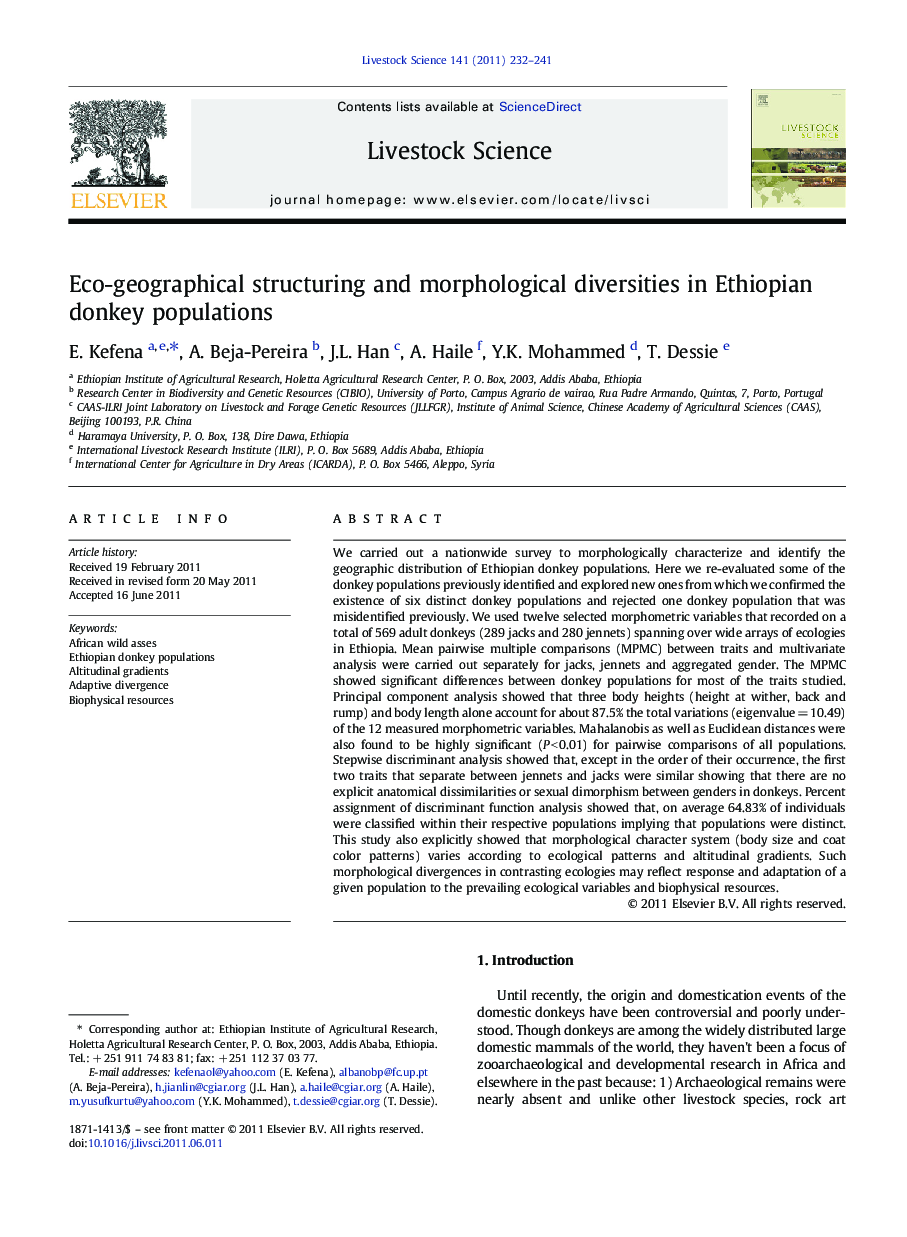| کد مقاله | کد نشریه | سال انتشار | مقاله انگلیسی | نسخه تمام متن |
|---|---|---|---|---|
| 5790647 | 1553991 | 2011 | 10 صفحه PDF | دانلود رایگان |
عنوان انگلیسی مقاله ISI
Eco-geographical structuring and morphological diversities in Ethiopian donkey populations
دانلود مقاله + سفارش ترجمه
دانلود مقاله ISI انگلیسی
رایگان برای ایرانیان
موضوعات مرتبط
علوم زیستی و بیوفناوری
علوم کشاورزی و بیولوژیک
علوم دامی و جانورشناسی
پیش نمایش صفحه اول مقاله

چکیده انگلیسی
We carried out a nationwide survey to morphologically characterize and identify the geographic distribution of Ethiopian donkey populations. Here we re-evaluated some of the donkey populations previously identified and explored new ones from which we confirmed the existence of six distinct donkey populations and rejected one donkey population that was misidentified previously. We used twelve selected morphometric variables that recorded on a total of 569 adult donkeys (289 jacks and 280 jennets) spanning over wide arrays of ecologies in Ethiopia. Mean pairwise multiple comparisons (MPMC) between traits and multivariate analysis were carried out separately for jacks, jennets and aggregated gender. The MPMC showed significant differences between donkey populations for most of the traits studied. Principal component analysis showed that three body heights (height at wither, back and rump) and body length alone account for about 87.5% the total variations (eigenvalue = 10.49) of the 12 measured morphometric variables. Mahalanobis as well as Euclidean distances were also found to be highly significant (P < 0.01) for pairwise comparisons of all populations. Stepwise discriminant analysis showed that, except in the order of their occurrence, the first two traits that separate between jennets and jacks were similar showing that there are no explicit anatomical dissimilarities or sexual dimorphism between genders in donkeys. Percent assignment of discriminant function analysis showed that, on average 64.83% of individuals were classified within their respective populations implying that populations were distinct. This study also explicitly showed that morphological character system (body size and coat color patterns) varies according to ecological patterns and altitudinal gradients. Such morphological divergences in contrasting ecologies may reflect response and adaptation of a given population to the prevailing ecological variables and biophysical resources.
ناشر
Database: Elsevier - ScienceDirect (ساینس دایرکت)
Journal: Livestock Science - Volume 141, Issues 2â3, November 2011, Pages 232-241
Journal: Livestock Science - Volume 141, Issues 2â3, November 2011, Pages 232-241
نویسندگان
E. Kefena, A. Beja-Pereira, J.L. Han, A. Haile, Y.K. Mohammed, T. Dessie,